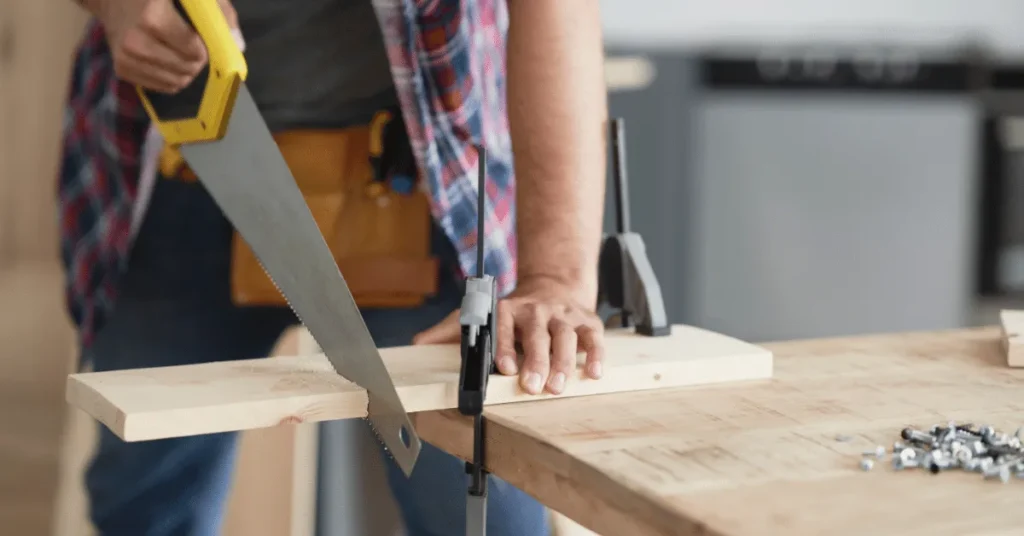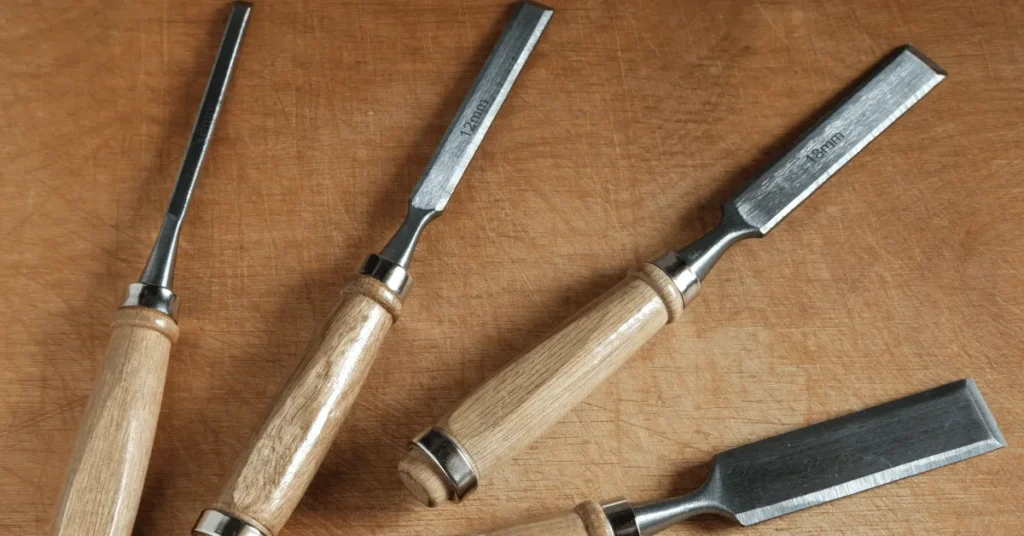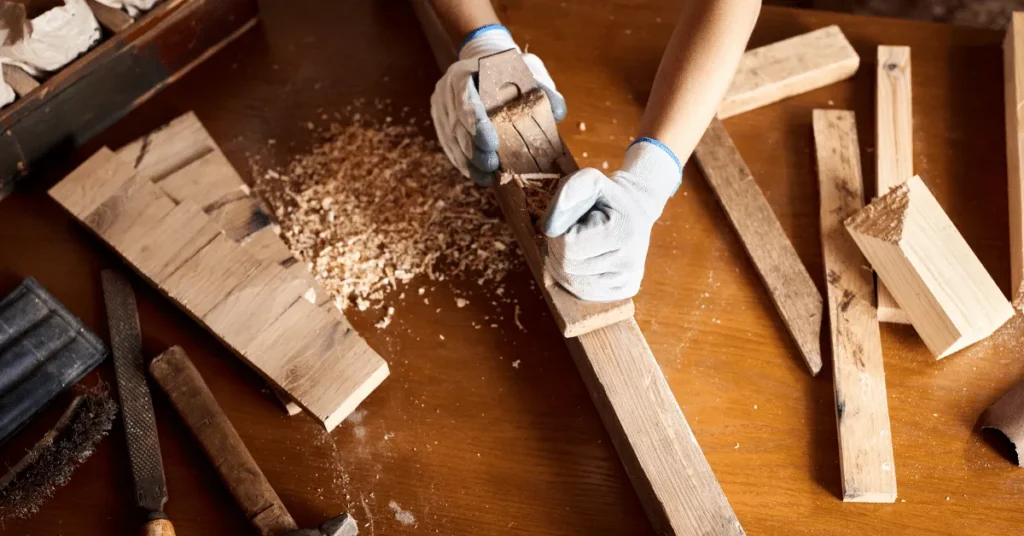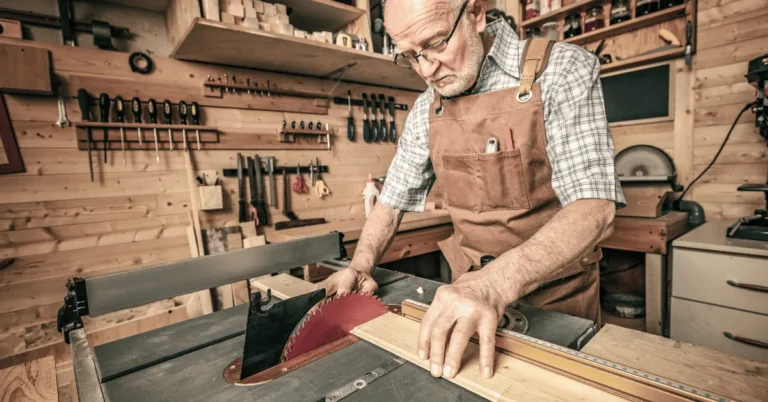In this guide, you will learn “Types of Hand Tools for Woodworking.” Discover the fundamental aspects of woodworking with a focus on the following key points:
- The Basic Hand Tools: Explore the essential hand tools that every woodworking enthusiast should have in their arsenal.
- Exploring Hand Saws: Delve into the world of hand saws, learning about the various types and their specific applications.
- The Art of Chisels and Planes: Uncover the different types of chisels and planes that play a vital role in woodworking, each serving its unique purpose.
And so much more, let’s dive right in.
Key Takeaways – Types of Hand Tools for Woodworking
- Safety first: Always wear protective gear and follow proper techniques.
- Choose quality: Invest in durable tools for long-lasting woodworking projects.
- Precision matters: Maintain and sharpen your tools regularly for accuracy.
- Learn and adapt: Seek resources and communities for continuous improvement.
- Mix tools wisely: Combine hand and power tools for efficient work.
- Wood selection: Matchwood type to project requirements for best results.
Table of contents
- Key Takeaways – Types of Hand Tools for Woodworking
- What are the basic hand tools for woodworking?
- What are the different types of hand saws?
- What are the different types of chisels?
- What are the different types of planes?
- Where to buy hand tools for woodworking?
- Important FAQs related to: Types of Hand Tools for Woodworking
- Final Thoughts on Types of Hand Tools for Woodworking
What are the basic hand tools for woodworking?
Woodworking demands skill, patience, and the use of appropriate tools. Whether you’re a beginner or an experienced woodworker, having the right-hand tools is essential for any project.
In this section, we will discuss some of the basic hand tools that every woodworker should have in their toolbox.
1. Tape Measure
A tape measure is a must-have tool for accurate measurements. It allows you to measure the length, width, and height of your wood pieces, ensuring precise cuts and fittings.
2. Chisels
Chisels shape and carve wood. They come in various sizes and shapes, allowing you to create intricate designs and smooth finishes.
3. Hand Saw
A hand saw cuts wood effectively, serving various woodworking purposes.

4. Screwdrivers
Screwdrivers are essential for driving screws into wood. They come in different sizes and types, including flathead and Phillips head screwdrivers.
Read More: What are the different hand tools used in woodworking?
5. Clamps
Clamps secure wood during gluing or for precise cuts. They come in various sizes and styles, such as bar clamps and spring clamps.
These represent only a handful of essential hand tools for woodworkers. As you gain more experience and take on more complex projects, you may find the need for additional tools.
Remember to always prioritize safety and invest in high-quality tools that will last for years to come.
Read More: Why use hand tools for woodworking?
What are the different types of hand saws?
In woodworking and DIY projects, having the correct tools is crucial. One tool that every craftsman should have in their arsenal is a hand saw.
Hand saws are adaptable for cutting wood and trimming branches.

There are several different types of hand saws available, each designed for a specific purpose. Now, let’s examine some of the most frequently encountered types:
- Crosscut Saw: Cuts across wood grain with angled sharp teeth.
- Rip Saw: Cuts along wood grain for a different purpose. It has fewer teeth per inch and a more aggressive cutting angle.
- Backsaw: This saw has a stiffened back edge, which provides extra support and stability. It is commonly used for precision cuts and joinery work.
These are just a few examples of the many hand saws available. Each type has its unique features and benefits, so it’s important to choose the right saw for the task at hand.
Read More: What are the different uses of hand tools?
What are the different types of chisels?
Chisels: Versatile tools used for centuries in woodworking and metalworking.
These tools vary in shape and size, each tailored to specific tasks. Here are some of the most common types of chisels:
- Bevel Edge Chisels: These chisels have a beveled edge, making them suitable for general-purpose woodworking tasks. They are great for creating clean cuts and shaping wood.
- Firmer Chisels: Firmer chisels have a thicker blade and are ideal for heavy-duty tasks. They are commonly used for chopping and roughing out wood.
- Mortise Chisels: Mortise chisels have a thick, rectangular blade and are designed for cutting mortises, which are rectangular slots used in joinery.
Other types of chisels include paring chisels, carving chisels, and gouges, each with their unique features and uses.

It’s important to choose the right chisel for your specific project to ensure precision and efficiency.
What are the different types of planes?
Woodworking is a craft that has been practiced for centuries, and one of the key tools in this craft is the plane. A plane is a tool used to shape and smooth wood surfaces, and different types of planes serve different purposes.
The most common type of plane is the bench plane, which is used for general smoothing and flattening tasks.
It has a flat sole and a cutting blade that protrudes through the sole. The bench plane comes in different sizes, with the larger ones used for heavy-duty work and the smaller ones for finer detail.
Another type of plane is the block plane, which is smaller and more compact than the bench plane. It is used for trimming and shaping small pieces of wood, and it is particularly useful for end grain work. The block plane has an adjustable mouth that allows for different cutting angles.
There are also specialty planes, such as the shoulder plane, which is used for trimming and fitting joints, and the router plane, which is used for cutting grooves and dadoes.
These planes are designed for specific tasks and have unique features that make them suitable for their intended use.

Whether you are a beginner or an experienced woodworker, understanding the different types of planes and their uses is essential.
Each type of plane has its strengths and limitations, and knowing when and how to use them can greatly enhance your woodworking projects.
Where to buy hand tools for woodworking?
If you’re a woodworking enthusiast, having the right-hand tools is essential for achieving the best results. Whether you’re a beginner or an experienced woodworker, finding the right place to buy high-quality hand tools can make all the difference in your projects.
One of the best places to buy hand tools for woodworking is at a local specialty woodworking store.
These stores often have a wide selection of hand tools specifically designed for woodworking, and the staff are usually knowledgeable and can help you find the right tools for your needs.
Plus, you can see and feel the tools in person before making a purchase.
If you prefer to shop online, several reputable websites specialize in woodworking hand tools.
These websites often offer a larger selection than local stores and may have exclusive deals or discounts. Some popular online retailers for woodworking hand tools include Woodcraft, Rockler, and Lee Valley.

Another option is to check out local flea markets, garage sales, or estate sales. You may be able to find used hand tools at a fraction of the cost of new ones. Just make sure to carefully inspect the tools for any damage or wear before buying.
Lastly, don’t forget about your local hardware stores. While they may not have as extensive of a selection as specialty woodworking stores, they often carry basic hand tools that are suitable for woodworking. Plus, they may have competitive prices and convenient locations.
Important FAQs related to: Types of Hand Tools for Woodworking
Safety is paramount in woodworking. Always wear appropriate safety gear, keep your tools sharp and well-maintained, and follow proper techniques to minimize the risk of accidents.
Yes, many woodworkers use a combination of hand and power tools. Hand tools offer precision and control, while power tools speed up larger tasks. The choice depends on the project and your preferences.
To ensure your tools last, clean and oil them regularly. Sharpen blades when they become dull, and store them in a dry place to prevent rust. Proper maintenance is key to longevity.
Numerous books, online tutorials, and woodworking communities are available for learning and improving your woodworking skills. Seek out these resources to expand your knowledge.
The choice of wood depends on the project’s requirements. Consider factors like strength, appearance, and ease of working with the wood. It’s essential to match the wood to the project’s needs.
Final Thoughts on Types of Hand Tools for Woodworking
In conclusion, “Types of Hand Tools for Woodworking” provides a comprehensive overview of essential tools for woodworking enthusiasts.
Whether you’re a beginner or a seasoned woodworker, having the right tools is key to your success. To enhance your woodworking journey, we invite you to share your thoughts and experiences in the comments below.
Your insights and questions can inspire others in their woodworking endeavors. Don’t forget to share this valuable resource with fellow woodworking enthusiasts who may find it beneficial.








